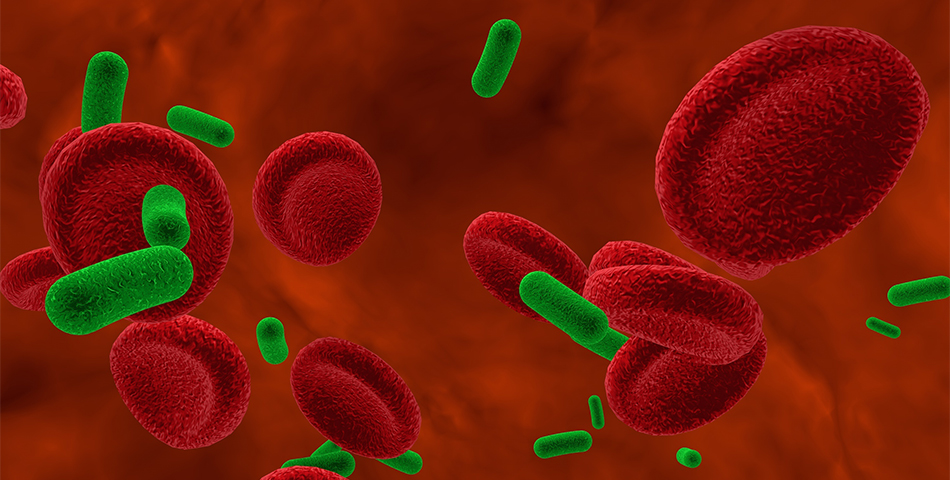The human immune system is a remarkable defense mechanism designed to protect against a multitude of threats, ranging from common cold viruses to life-threatening bacterial infections.1 It is a complex and intricate network of cells, proteins, and molecules working together to identify, neutralize, and eliminate invading pathogens. However, when this sophisticated defense system goes awry and leads to a deadly condition known as sepsis, it becomes a critical medical emergency.
The Immune System at Work
Before delving into the sepsis–immune system connection, let’s take a moment to appreciate the brilliance of the immune system. Divided into two parts—innate and adaptive immunity—it is a harmonious symphony of responses that plays out when our body encounters an infection.1
The immune system's primary role is distinguishing between the body's own cells and foreign substances. Innate immunity acts as the first line of defense, providing immediate responses to infections.2 Think of it as a generic defense that targets a broad range of pathogens. Cells like neutrophils and macrophages devour pathogens and send signals to activate the adaptive immune system. On the other hand, the adaptive immune system is like the Special Forces.3 It takes time to deploy, but once in action, it is highly precise and tailored to specific pathogens. This is where immune cells called T-cells and B-cells come into play. B-cells produce antibodies that lock onto specific pathogens, while T-cells orchestrate the immune response to eliminate specific pathogens.
What Happens During Sepsis?
Now, let’s explore sepsis—a condition that occurs when the immune response takes an unexpected and dangerous turn.4 Sepsis is not just an infection; it is a medical emergency that arises when the body's response to an infection goes haywire. Sepsis sets off a chain of events that can lead to widespread inflammation, organ dysfunction, and if not treated promptly, death. Sepsis can arise when any type of infection—bacterial, viral, or fungal—enters the bloodstream followed by a dysregulated host immune response to the infection.
Impact on Immune Cells: Overdrive and Exhaustion
In a normal response, white blood cells (WBCs), including neutrophils and macrophages, are sent to the site of infection to eradicate the invading pathogens. A localized inflammatory reaction, which can include heat, pain, redness, swelling, and decreased function of the localized tissue, occurs. This inflammatory response is mediated by inflammatory mediators and cytokines—signaling molecules that mobilize, ramp up, and activate cells of the immune system.
During sepsis, the immune response can become hyperactive, leading to a surge of immune cells and inflammatory molecules,4 which cause injury to the body’s own tissues and organs. Because the infection is now moving throughout the body, there is a generalized inflammatory response. The sheer volume of immune cells, inflammatory mediators, and cytokines throughout the body can lead to collateral damage in healthy tissues. This inflammatory cascade can affect multiple organs, giving rise to organ dysfunction—a hallmark of sepsis.
One of the most concerning aspects of sepsis is the potential for a cytokine storm, where cytokines are produced and released in overwhelming quantities. This cytokine storm can lead to systemic inflammation and further contribute to tissue and organ damage.

Immunosuppression After the Storm
The sepsis–immune system connection becomes even more intriguing when we consider the paradoxical response that follows. After the initial surge of immune activity, sepsis can trigger an immunosuppressive state.5 This means that the formerly overactive immune system becomes subdued and unable to mount an effective defense against subsequent infections. This state of immune paralysis is often referred to as sepsis-induced immunosuppression.6 While it might seem counterintuitive, sepsis-induced immunosuppression leaves patients vulnerable to secondary infections, which can be just as life-threatening as the initial infection. Survivors can experience long-term alterations in immune function, which can create a cycle where the weakened immune system struggles to ward off new threats, leading to a greater risk of recurrent infections.7 These effects underscore the need for ongoing monitoring and care for sepsis survivors.
Research Insights: Pioneering the Path to Solutions
Researchers are actively investigating the immune response in sepsis to better understand its complexities and identify potential interventions. The scientific community is particularly interested in harnessing the power of precision medicine to tailor sepsis treatments. This personalized approach aims to restore balance to the immune system and mitigate the damaging effects of sepsis.
Understanding the intimate relationship between sepsis and the immune system is crucial for developing effective strategies to manage and prevent this life-threatening condition. Similarly, specific targeting of the pathogen is necessary to best treat the patient and curtail antibiotic resistance. The DxM MicroScan WalkAway ID/AST system can be used to identify the pathogen responsible for sepsis and perform susceptibility testing to identify the most appropriate treatment.
By supporting ongoing research, raising awareness about sepsis, and advocating for the advancement of medical knowledge, we can contribute to rewriting the narrative of sepsis, offering hope, health, and the promise of a safer tomorrow.
Interested in learning more? Explore solutions for sepsis diagnosis and management in the lab.

 English
English





